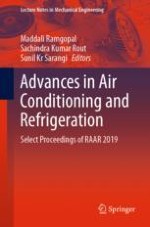
2021 | OriginalPaper | Chapter
Modelling and Simulation of Photovoltaic Thermal Cooling System Using Different Types of Nanofluids
Authors : Sanjeev Jakhar, Mukul Kant Paliwal, Atul Kumar
Published in: Advances in Air Conditioning and Refrigeration
Publisher: Springer Singapore
Activate our intelligent search to find suitable subject content or patents.
Select sections of text to find matching patents with Artificial Intelligence. powered by
Select sections of text to find additional relevant content using AI-assisted search. powered by